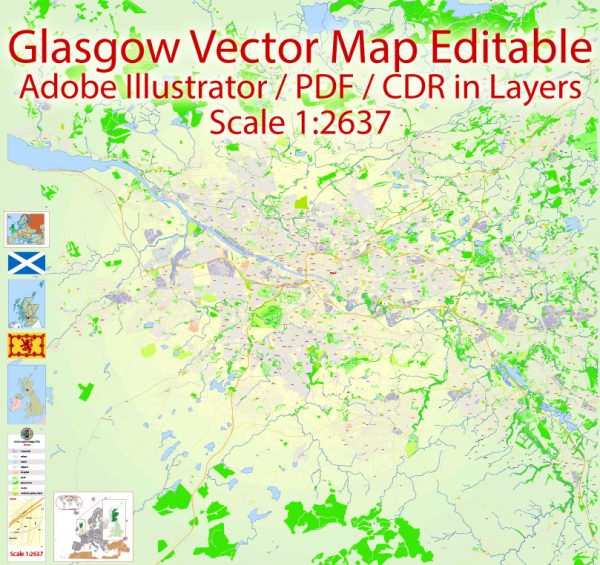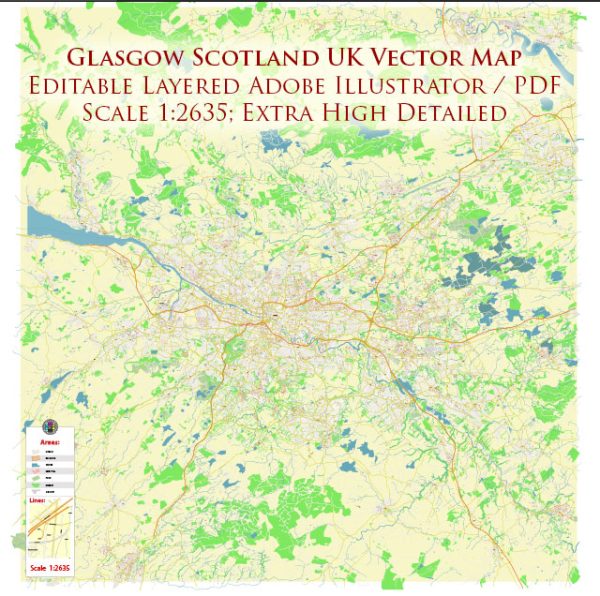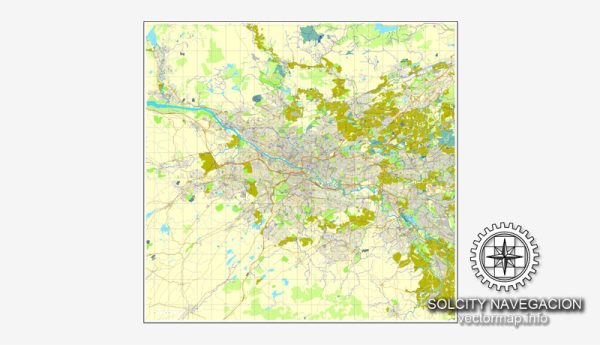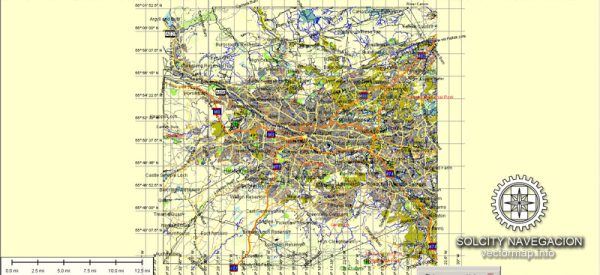Glasgow, located in Scotland, United Kingdom, has a rich history of urban development that spans centuries. Here’s a brief overview of key phases in the city’s urban evolution:
Medieval Period:
Glasgow’s origins can be traced back to the 6th century when it was established as a small Christian settlement on the banks of the River Clyde. Over the medieval period, the city gradually expanded around the Glasgow Cathedral, which was consecrated in the 12th century. The High Street became the main thoroughfare, and the city’s economy revolved around trade and the cathedral.
Early Modern Era:
During the 17th century, Glasgow transformed into a major trading and industrial hub. The city’s location along the River Clyde was pivotal for trade, and its merchants engaged in commerce with the American colonies and the West Indies. The Tobacco Lords, wealthy tobacco merchants, played a significant role in shaping the city’s fortunes during this period.
Industrial Revolution:
The 18th and 19th centuries marked a period of rapid industrialization for Glasgow. The city became a global center for shipbuilding, engineering, and textiles. The construction of numerous warehouses, factories, and tenements changed the cityscape. The Clyde Waterfront became a hub for shipbuilding, and the city’s population soared as people migrated in search of work.
Victorian Glasgow:
Glasgow’s Victorian era saw the development of grand civic buildings, parks, and the expansion of the city’s infrastructure. Notable landmarks such as the City Chambers and Kelvingrove Park were established during this time. The Glasgow Corporation Tramway began operation in 1872, facilitating public transportation.
Post-War Era:
After World War II, Glasgow, like many industrial cities, faced economic challenges. Deindustrialization led to unemployment and urban decay. The city’s population declined, and many traditional industries collapsed. Urban renewal projects were initiated in an attempt to revitalize the city, including the construction of high-rise housing estates.
Contemporary Developments:
In recent decades, Glasgow has undergone significant regeneration efforts. The post-industrial decline spurred efforts to diversify the economy and invest in cultural and educational initiatives. The transformation of the former industrial areas into modern commercial and residential spaces, particularly along the River Clyde, has reshaped the city.
Modern Architecture and Culture:
Glasgow is known for its mix of historic and modern architecture. The city has embraced contemporary design while preserving its historical landmarks. Notable modern developments include the Glasgow Science Centre, the Riverside Museum, and the redevelopment of areas like Finnieston into vibrant cultural and dining districts.
Conclusion:
Glasgow’s history of urban development reflects its evolution from a medieval religious center to a thriving industrial powerhouse and, more recently, a city undergoing post-industrial regeneration. Today, Glasgow stands as a dynamic and culturally rich urban center with a diverse architectural landscape that tells the story of its past and present.





 Author: Kirill Shrayber, Ph.D.
Author: Kirill Shrayber, Ph.D.